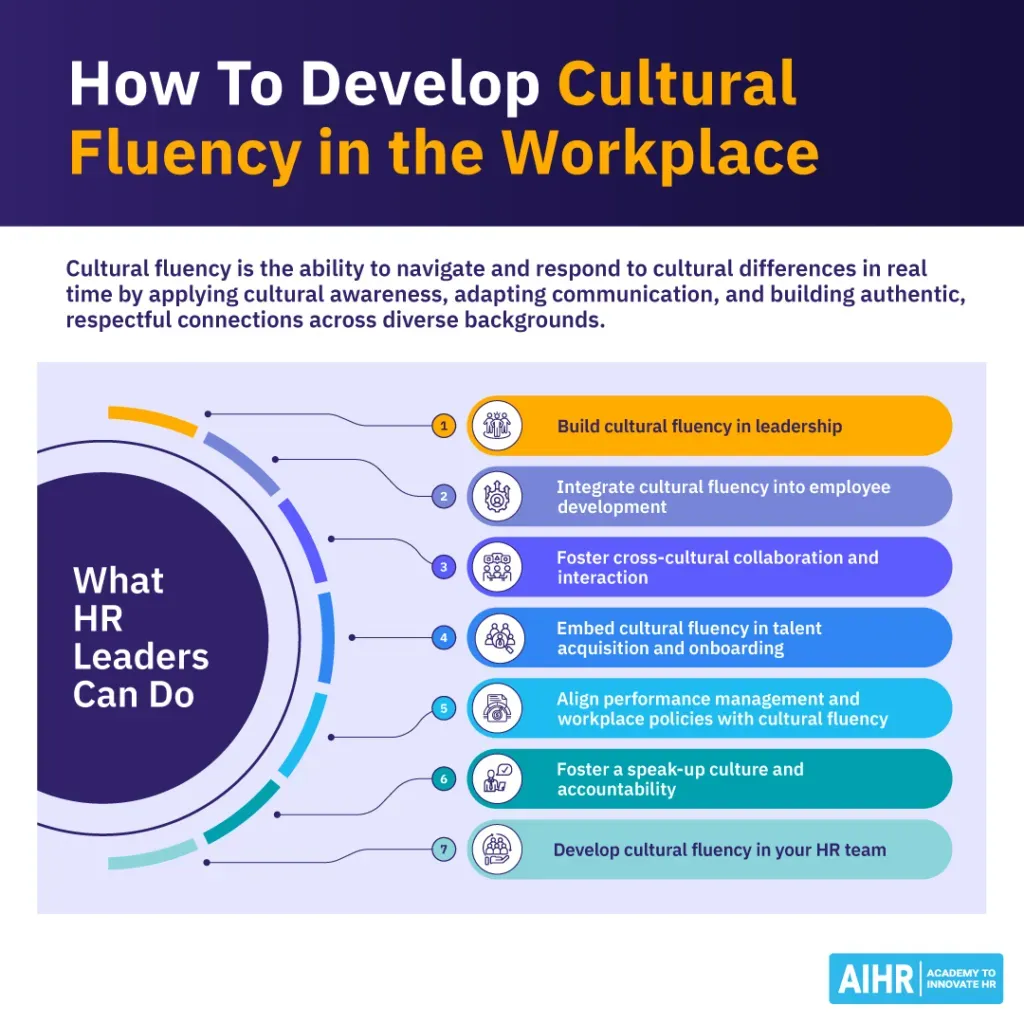Cultural Fluency unlocks the ability to read cultural cues, adapt respectfully, and engage effectively in diverse settings. Moving into a new country, joining a multinational team, or navigating multicultural environments can bring culture shock, an initial wave of unfamiliar norms and expectations. Cultural Fluency helps you respond with clarity, using intercultural communication to read signals and bridge gaps. It also builds cultural intelligence and cross-cultural competence, empowering you to collaborate across diverse teams. By cultivating these skills, you turn cultural differences into opportunities for collaboration, learning, and shared success.
Beyond the term Cultural Fluency, you’ll hear phrases like cultural literacy, intercultural sensitivity, and global readiness that describe a similar capability. This broader view emphasizes decoding culturally embedded cues, adapting behaviors, and collaborating across diverse teams with intention and respect. It involves developing a flexible mindset, recognizing varying norms around time, hierarchy, and communication, and building trust with people from different backgrounds. In practical terms, it means staying curious, asking thoughtful questions, and applying inclusive practices that invite diverse perspectives. In short, this topic maps to a spectrum of related skills that empower individuals to thrive in global, multicultural settings.
From Culture Shock to Cultural Fluency: Navigating Multicultural Environments with Intercultural Communication
Culture shock can feel overwhelming as you encounter unfamiliar norms, languages, and decision‑making rhythms. But it also presents a critical invitation to develop Cultural Fluency—the practical ability to interpret and respond effectively in cross-cultural contexts. When you approach new environments with curiosity and respect, you begin to navigate multicultural environments using a blend of intercultural communication skills and cultural intelligence.
Developing Cultural Fluency means reading signals beyond words: direct versus indirect speech, how time is understood, and how power and group cohesion shape conversations. By practicing intercultural communication and expanding cultural intelligence, you build the cross-cultural competence to respond thoughtfully rather than react impulsively in diverse meetings and projects.
With these skills, teams experience smoother onboarding, richer collaboration, and more inclusive problem solving across borders. You can tailor your messages, invite quieter voices, and crystallize shared goals in a way that respects different cultural lenses. The outcome is sustained trust, faster learning, and outcomes that reflect multiple perspectives.
Advancing Cultural Fluency: Building Cross-Cultural Competence through Cultural Intelligence and Intercultural Communication
Advancing Cultural Fluency requires ongoing practice, feedback, and deliberate exposure to varied contexts. Cross-cultural competence grows when you translate cultural insights into action, using cultural intelligence as both a compass and a toolkit.
Structured approaches—intercultural communication training, reflective journaling of intercultural encounters, mentorship, and real-world practice—help you sharpen language choices, tone, and nonverbal cues. Creating inclusive spaces where diverse voices shape decisions moves awareness into everyday behavior and builds reliable trust across teams.
Measuring progress comes from observable changes: clearer collaboration, reduced misinterpretations, and stronger relationships across borders. With consistent practice—from storytelling that refracts culture to feedback loops that celebrate growth—you strengthen cultural intelligence and cross-cultural competence, turning each encounter into progress on the journey toward Cultural Fluency.
Frequently Asked Questions
How does Cultural Fluency help you move from culture shock to confident engagement in new environments?
Cultural Fluency is the ability to interpret and respond to behavior across cultures with curiosity and respect. It helps you read norms, communication styles, and power dynamics, reducing culture shock and making adaptation smoother. By strengthening intercultural communication, cultural intelligence, and cross-cultural competence, you can participate more fully in diverse settings and collaborate across borders.
What practical steps can you take to improve intercultural communication and cultural intelligence when navigating multicultural environments?
Start with self-awareness to identify your own defaults and biases, then seek context before etiquette. Listen actively, ask clarifying questions, and reflect on interactions to adjust your approach. Practice empathy and humility to sustain respectful engagement. These steps build intercultural communication, cultural intelligence (CQ), and cross-cultural competence, helping you navigate multicultural environments with confidence and support Cultural Fluency as an ongoing practice.
| Aspect | Key Points |
|---|---|
| What Cultural Fluency Means | Cultural Fluency is more than language or etiquette. It is the ability to interpret and respond effectively to behavior in cross-cultural contexts with curiosity and respect. It blends awareness of your own cultural lens with openness to others’ viewpoints, helping you recognize direct vs indirect communication, time orientation, power distance, and group dynamics in interactions. |
| Role of Culture Shock | Culture shock reveals gaps between expectation and reality. It is not meant to frighten; it highlights differences. The goal is to reduce friction by building interpretation and adaptation strategies—pause, ask clarifying questions, and reframe responses to respect others’ frames of reference. |
| From Culture Shock to Cultural Fluency: Practical Path | Steps include: self-awareness and recognizing biases; seeking context beyond generic etiquette; listening actively; asking clarifying questions; reflecting and adapting; practicing empathy and humility. |
| Core Skills Supporting Cultural Fluency | Intercultural communication; Cultural intelligence (CQ); Cross-cultural competence; Empathy and adaptability; Language as a bridge. |
| Strategies for Navigating Multicultural Environments | Create inclusive spaces; normalize questions and curiosity; manage conflict thoughtfully; build relationships across cultures; leverage storytelling; use culturally aware feedback. |
| Common Pitfalls and How to Avoid Them | Stereotyping; language barriers; overreliance on “rules”; ethnocentrism; burnout from constant adaptation. |
| Real-World Applications and Examples | A five-region project team example: map communication preferences, respect different work rhythms, and appoint a facilitator to translate between styles; invite input from quieter participants; tailor messaging to align with client decision-making styles. |
| Tools, Resources, and Practices | Cross-cultural training, reading diverse literature, mentoring and coaching, immersive experiences, and reflection journals. |
Summary
Table and key points have been presented above.



